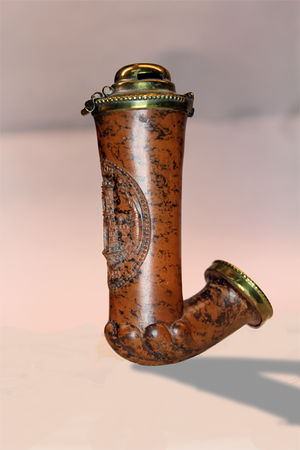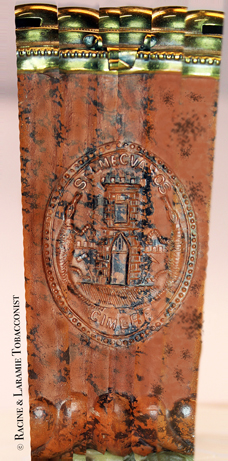Selmec


The Hungarian clay pipe is famous. The illustration is a 19th Cent. example with the seal of the town of Selmec on the front. The seal represents two salamanders which legend tells us led residences to the gold deposits. Hammer and pick are also represented. These clays represent an entirely different clay pipe tradition from the English clay pipes. These shapes are based on Turkish clay pipes which entered Europe from the East.
After 1663 the Austrian Emperor Leopold called upon the estates of the realm to assist in defending Vienna against the Turks. Papal pressure demanded that the support of French mercenaries also had to be accepted and the great Hungarian noblemen Ferenc Nadasdy, Miklos Zrinyi, Adam Batthiany and Miklos Berceseni,vice-captain of the mining district, recruited large numbers of soldiers against the Turks as well. The French soldiers of Souches, the German and Spanish mercenaries of the Imperial Army and the Hungarian cavalry were often to be seen at Nyitra, Leva, Fulek and Selmec. Now the inhabitants of royal Northern Hungary learnt of pipe smolking from the soldiers at the time of the incursions of the highlands. Judging by the shape of the pipes it is from this period that the beginning of pipe- making in Selmec can be dated.
English and Dutch pipes were not easy to obtain. and their influence was negligible. The real impetus on the Selmec pipe shapes came from the Turkish chibouk, and especially the version made by Turkish pipe-makers in Buda which had a relatively high cylindrically shape bowl with a hemisphere at the bottom and a short, knobby neck which joined the bowl at an angle of 60 degrees. In the case of the Selmec pipes the remarkably rich modeling of the foot is the most strikingly characteristic feature. An important element is the shell-leaf decoration that opens fan-wise on the foot of the pipe, something that became widespread in Austrian, German, and French territories.
Pipe making at Selmec truly got under way at the beginning of the eighteenth century. The modeling and distribution of the Selmec pipes at that time can be connected wth two masters, Benjamin Annert and Theresien-Feld/ F. Netter.
In 1848 Hungary fought for independence from Austria. After the revolution was quashed Kossuth, President of the Kingdom of Hungary, was forced into exile, and the Selmec pipe came into vogue in Turkey and later Northern Italy, In 18523-1853 Kossuth toured America the Selmec pipe came into vogue there also.
Courtesy Geoffrey Mogilner, Racine & Laramie Tobacconist
- Reference: “Our Pipe Smoking Forebears” by Ferenc Levardy